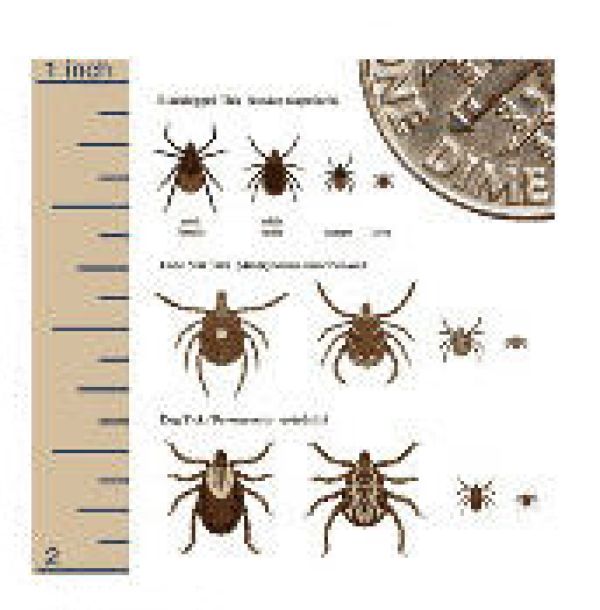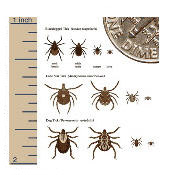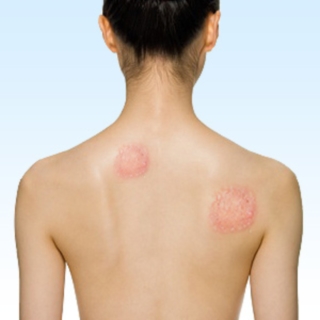
Ticks & Lyme Disease
 This early spring brought some pleasant surprises. Chorus frogs were singing in early March. Apple trees were blooming in the fourth week of March. Virginia bluebells started blooming the first week of April. These delights were all about a month early this year!
This early spring brought some pleasant surprises. Chorus frogs were singing in early March. Apple trees were blooming in the fourth week of March. Virginia bluebells started blooming the first week of April. These delights were all about a month early this year!
Unfortunately, there were also some unpleasant early arrivals. Buckthorn and Honeysuckle started growing in mid-March. Reed canary grass was green and growing by the third week of March. And ticks were out in March too.
That’s right, ticks.
The adjacent picture comes from a useful article about ticks and Lyme Disease on the Illinois Department of Public Health’s webiste.
The most likely tick to see in this area is the dog tick, shown at the bottom of the picture. The dog tick can be nearly a quarter of an inch in size, with brown and cream markings on the back and underside. If you have a dog that has had a tick, it was one of these. Dog ticks are not known to carry Lyme disease
Occasionally, one might see a deer tick, the small black and brown one shown at the top of the picture. The deer tick is small – less than an eighth of an inch, and is all black and brown. These are the ticks that carry Lyme disease.
You have probably heard about the initial symptoms of Lyme disease: “bull’s eye” rash, flu-like aches, fever, fatigue. Here’s a picture of the rash.
The Centers for Disease Control and Prevention has a lot of information about Lyme disease – prevention, symptoms, diagnosis, treatment on its website.
The good news is that if diagnosed early, the disease will be cured in 80-90% of cases. However, in 10-20% of cases, patients will develop a chronic condition known as Post-treatment Lyme Disease Syndrome, so it is best to avoid getting the disease in the first place.
Some of the ways to avoid being bitten by a tick are:
- Wear light-colored, loose-fitting clothing with long sleeves, wear a hat, and tuck pants into socks when outdoors in wooded or areas of high grass during the growing season.
- Use 20% or stronger DEET or premethrin sprayed on clothing if going outside into tick-prone areas.
- Remove and wash clothing after coming home to destroy any ticks that may have hitched a ride.
- Take a shower within two hours of coming back indoors to wash off any ticks that may be on your body but have not yet attached themselves.
If you do find a tick has attached itself, use fine-tipped tweezers to remove it by grasping the tick as close to the skin as possible. Pull upward with a smooth motion – do not twist, as that may cause the tick’s mouth part to break-off and remain in your skin. Once removed, wash the area. If the mouth parts are still in your skin, and will not remove easily with the tweezers, leave them there, and let the bite heal. You don’t want to cause an infection or create a scar.
If the tick is a deer tick – also known as a black-legged tick – watch the bite location for signs of rash. Don’t be afraid to talk to your doctor if you have any of the symptoms noted above, even if you do not develop a rash.
Fortunately, Illinois has a relatively low incidence of Lyme disease. In 2010, according to the CDC, Illinois had 135 cases of Lyme disease confirmed. Compare that with Wisconsin, which had over 2,500 cases that same year.
Don’t be surprised with a case of Lyme disease. And don’t avoid the outdoors because there are ticks out there! Just take the proper steps to avoid being bitten.